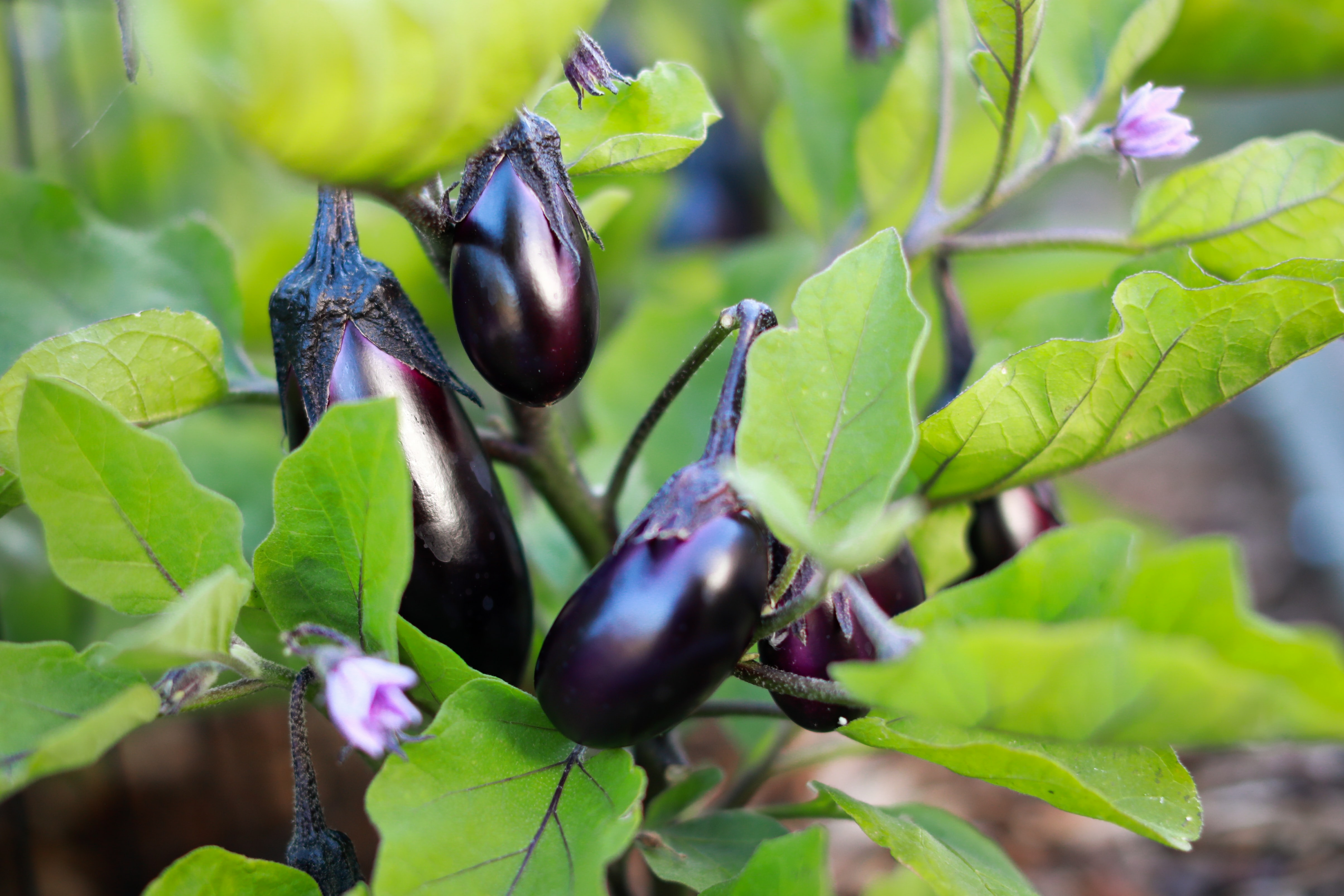
Growing Eggplants: Tips on Sowing, Care For & Harvesting
Eggplants are one of the more demanding vegetables: they need a lot of warmth and light. In this article, you will learn everything you need to know about sowing, planting, caring for and harvesting them so that they can be grown in our latitudes without any problems.
This Article Contains:
- Planting Eggplants: What You Should Know
- Eggplant Varieties: An Overview
- Sowing Eggplant: How to Do It
- Planting Eggplants: Spacing & Timing
- Growing Eggplants in Pots
- Mixed Culture With Eggplant/Melanzani
- Your Mixed Crop Planting Plan With Aubergine
- Fertilizing & Caring for Eggplants
- Diseases & Pests
- Harvesting, Storing & Processing Eggplants
- Overwintering Eggplants - Here’s How
- Frequently Asked Questions About Growing Eggplants
Quick Overview
Sowing and Planting Eggplants
- Location: sheltered, sunny spot at 25 ° C/77° F and loose, humus-rich soil
- Pre-cultivation from February/March
- Germination time: 2 to 4 weeks
- Germination temperatures: 22 to 24 ° C/71,6 to 75,2 ° F
- Planting out outdoors is possible after the Ice Saints; in the greenhouse at the beginning of May
- Planting distance in the bed: 60 x 60 cm/23,6 x 23,6 in
- Good companion plants are f.e. beans, radishes, various types of cabbage, spinach and lettuce.
Overwintering Eggplants - Brief Instructions
- Harvest eggplants before temperatures fall below 12 ° C/53,6 ° F
- Cut back the plant and remove about half of the leaf mass and shoots
- Place in a cool, bright place with temperatures around 10 to 15 ° C/50 to 59 ° F for the winter
- Water regularly and check the eggplants for diseases and pests
- Repot in February/March and place in a warmer, bright location
Planting Eggplants: What You Should Know
Like many popular vegetables, the eggplant (Solanum melongena) belongs to the nightshade family (Solanaceae). It is therefore closely related to Tomatoes, Peppers and Potatoes. This thermophilic vegetable originally comes from Asia, where it was cultivated over 3000 years ago. The delicately hairy, oval leaves and the purple flowers with yellow anthers, which grow into shiny fruits, also make the eggplant a beautiful ornamental plant in the vegetable garden.
It is a perennial in its native country and usually grows to a height of 60 to 120 cm/23,6 to 47,2 in. Due to falling temperatures and frost in winter, eggplants are usually only grown as annuals in Germany. However, it is also possible to overwinter eggplant plants. You can find out more about this in the article below.
The Right Location
Eggplants need a lot of warmth and are just as demanding to grow as peppers. In our latitudes, they can only be grown outdoors under very favorable conditions. In mild wine-growing regions, outdoor cultivation can be worthwhile, but here too care should be taken to ensure that the location is as sheltered as possible. For example, a sheltered spot on a south-facing house wall would be suitable. To avoid disappointment, however, we recommend growing them in a greenhouse or foil tunnel. Ideally, eggplants grow at 25 °C/77 °F. If temperatures fall below 15 °C/59 °F, growth problems are to be expected. When growing in a greenhouse, ensure regular ventilation so that the humidity does not become too high and the greenhouse does not overheat. The soil should be as loose and rich in humus as possible, so prepare it with plenty of compost. This is because eggplant plants are heavy feeders and therefore a hungry crop.
Eggplant Varieties: An Overview
The eggplant has its name as some varieties are white and egg-shaped and therefore bear a certain resemblance to eggs. Apart from the white "egg fruits", eggplants are classically available in dark purple, marbled or even red.
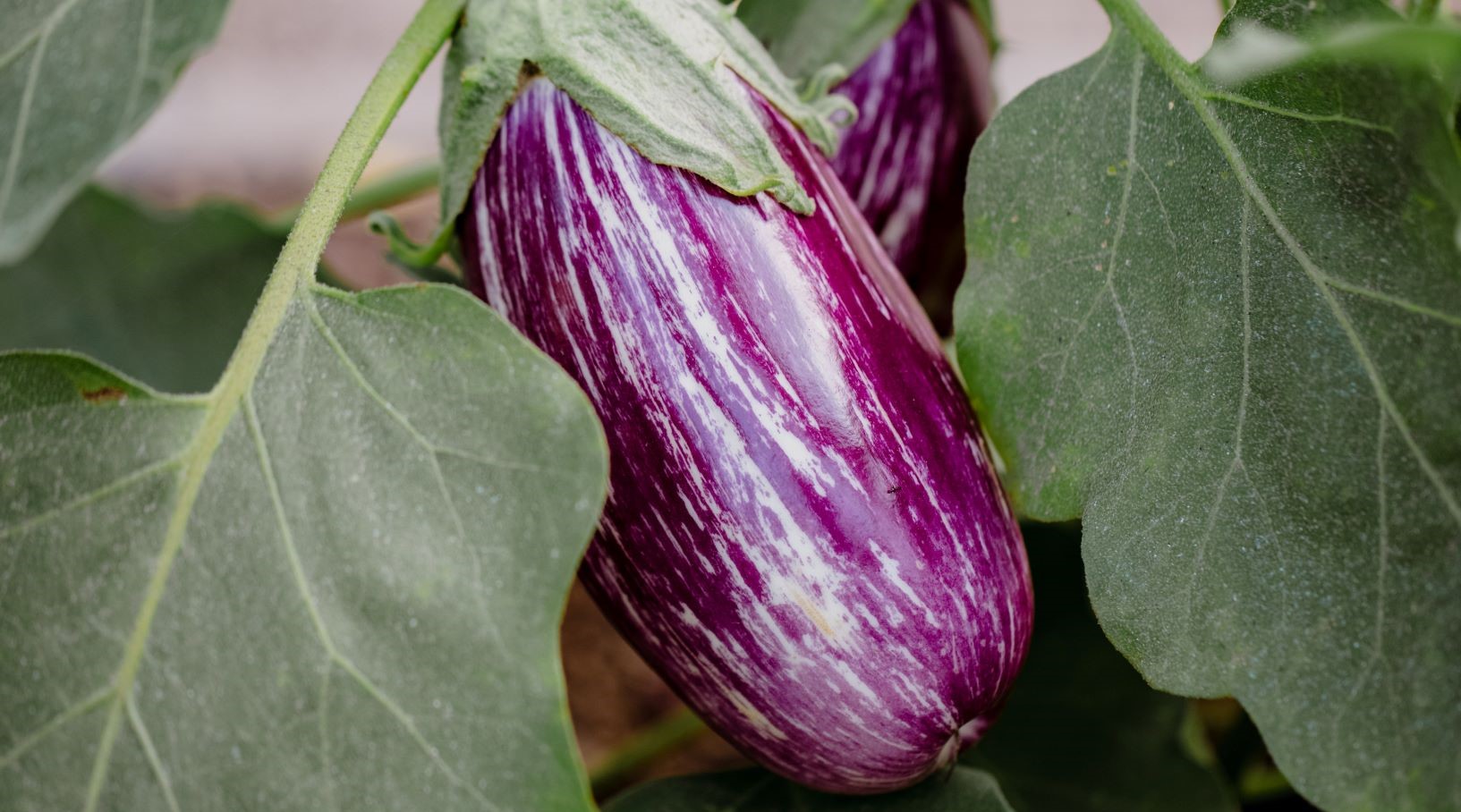
What Types of Eggplant Are There?
- 'Diamond': dark purple, robust variety - suitable for outdoor and pot cultivation.
- 'Blaukönigin': variety with dark purple fruits that become lighter as they ripen.
- 'Little Spooky': elongated, white eggplants that look like little ghosts in the dark.
- 'White Egg': white variety with round to egg-shaped fruits.
- 'Antigua ': a purple and white striped variety with elongated fruits.
- 'Applegreen': it resembles the white eggplant, but bears light green colored fruits. This special variety also sets fruit in cooler conditions. Harvest the fruits while they are still light in color; when fully ripe, they turn golden yellow and bitter.
- 'Gilo Brazil': this special variety is initially green and turns orange-red when ripe. It is edible in both stages.
- 'African Egg': this variety produces white, egg-shaped fruits that turn red when ripe.

Discover Numerous Varieties in the Library!
In our library you will find information on the individual varieties with cultivation periods, tips on planting and harvesting. You will also find companion plants to help you plan a mixed crop.
View Library NowSowing Eggplant: How to Do It
As eggplants grow very slowly, they are one of the first vegetables to be grown indoors. If possible, start sowing in February. They are grown in seed trays with small, individual wells. Only place one seed in each well, cover it thinly with potting compost and water the pots well. Then cover the soil with a transparent cover (e.g. cling film) so that the soil does not dry out so quickly. However, remember to lift the foil regularly and air it out to prevent mold from forming. Then place the whole thing on a bright, warm windowsill, but preferably not over a heater. Germination can take two to four weeks, even at the optimum germination temperature (22 - 24 °C/71,6 - 75,2 °F). So don't be put off if you don't see any sprouts after two weeks.
Planting Eggplants: Spacing & Timing
The first seedlings can be planted in a greenhouse or foil tunnel from the beginning of May to mid-June. Ensure a planting distance of 60 x 60 cm/23,6 x 23,6 in so that the sprawling shoots can develop undisturbed. Secure the shoot with a bamboo stick or similar when planting, otherwise the plants will later bend under the weight of the egg fruits or sink to the ground. In the open ground, the plants should only be planted after the ice saints in mid-May. To meet the heat requirements of the eggplants, a fleece cover can be helpful at the beginning. If you have not already prepared the soil with compost, you can add this to the planting hole. Choose a sunny, wind-protected spot for planting outdoors.

Growing Eggplants in Pots
You can easily grow eggplants in pots. The choice of variety plays an important role here, as there are varieties with more compact growth and smaller fruits. Varieties such as 'Early Long Purple' and 'Kaberi', dark purple varieties with lots of mini eggplants or 'Ivory', a creamy white, thin-skinned eggplant, are suitable for growing on the balcony. When it comes to pot size, you should choose pots with a diameter and depth of at least 30 to 40 cm/11,8 to 15,7 in. It is well known that eggplant plants need a lot of water. If you choose a pot that is too small, the risk of drying out is much greater and the roots will hardly have enough space to grow. It is also important to fertilize and water regularly.
Mixed Culture With Eggplant/Melanzani
Good companion plants are beans, radishes, spinach, lettuce and various types of cabbage (cauliflower, broccoli, kohlrabi, kale, ...). Bad companion plants are mainly other nightshade plants such as tomatoes, potatoes and peppers. Also avoid peas and beet as direct planting partners. You can find out more about eggplants in mixed cultivation and two example planting plans in our article Eggplant - Good and Bad Companion Plants.
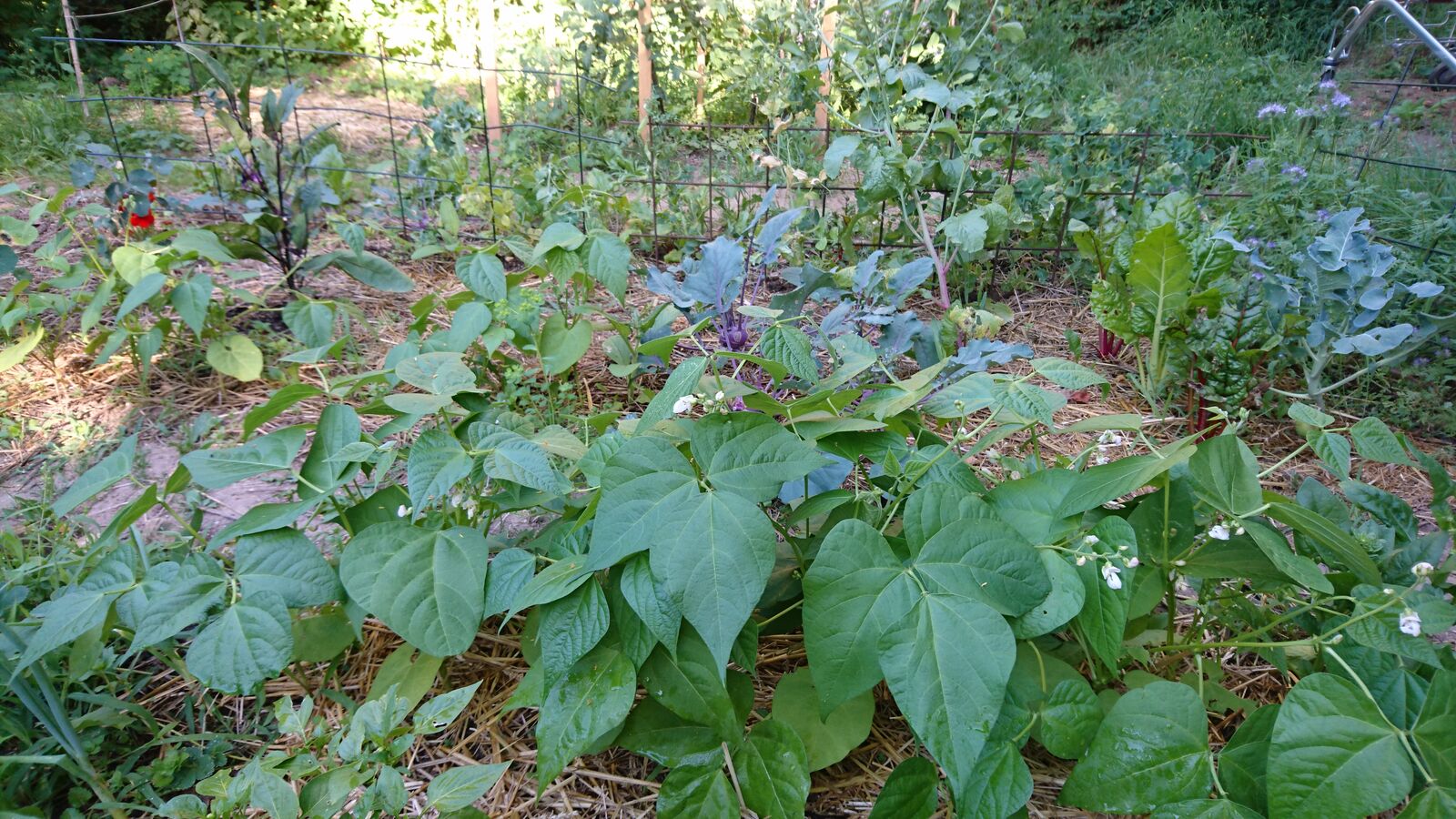
Succession Planting & Crop Rotation
Succession planting: Fast-growing crops that can withstand a little cold (e.g. lettuce and radishes) are suitable as a pre-crop. In the fall, when it gets too cold for your eggplant plants, you can sow spinach or green manure (e.g. mustard and clover grass) as a secondary crop.
Crop rotation: Take a cultivation break of 4 years between eggplants and other nightshade plants. Beans or other legumes can be used to enrich the soil with nitrogen in the previous year.
Your Mixed Crop Planting Plan With Aubergine
Here you will find inspiration for your mixed cultivation with aubergine with suitable pre- and post-crops so that your bed is planted all year round.
Fertilizing & Caring for Eggplants
Like tomatoes, eggplants are fertilized organically several times during the summer. However, they need less fertilizer than the hungry tomatoes. In addition to the basic fertilization of the soil with compost and horn meal, a little diluted nettle manure can be added every few weeks. As an alternative to horn meal, a mixture of algae lime and rock flour is suitable as a preparation and liquid fertilization with comfrey liquid manure. Liquid fertilization begins as soon as the plants have four properly developed leaves and is discontinued at the end of August.
Regular watering is also one of the most important care measures, as the plants evaporate large amounts of water through their large leaves. Under drought stress, the plants can otherwise drop their flowers and only produce very small fruits. To keep the soil around your plants evenly moist, you can mulch them with a thin layer of grass clippings. Leave your eggplant plants with a maximum of three shoots, each with two fruit sets, so that the fruits develop most evenly. Remove excess fruit sets and harvest the fruit in good time to encourage the growth of the other fruit sets. It can therefore also be worthwhile thinning out the eggplant plants. This removes new side shoots and thus restricts leaf growth. If you allow the side shoots to grow, you can alternatively guide them upwards on sticks.
Diseases & Pests
Eggplants are relatively resistant to diseases and rarely cause problems in this respect. Sometimes aphids can make themselves at home on the plants, but these can be controlled relatively easily by spraying with water or spraying with neem oil. Whitefly can also occur in the greenhouse, here too treatment with Neem oil is useful. In addition, yellowing boards and the use of beneficial insects (e.g. parasitic wasps) can help to reduce the infestation. Gray mold can also occur, especially in greenhouses. Preventive action should be taken here: Make sure to keep the leaves as dry as possible and ventilate the greenhouse regularly so that the humidity does not rise too much.
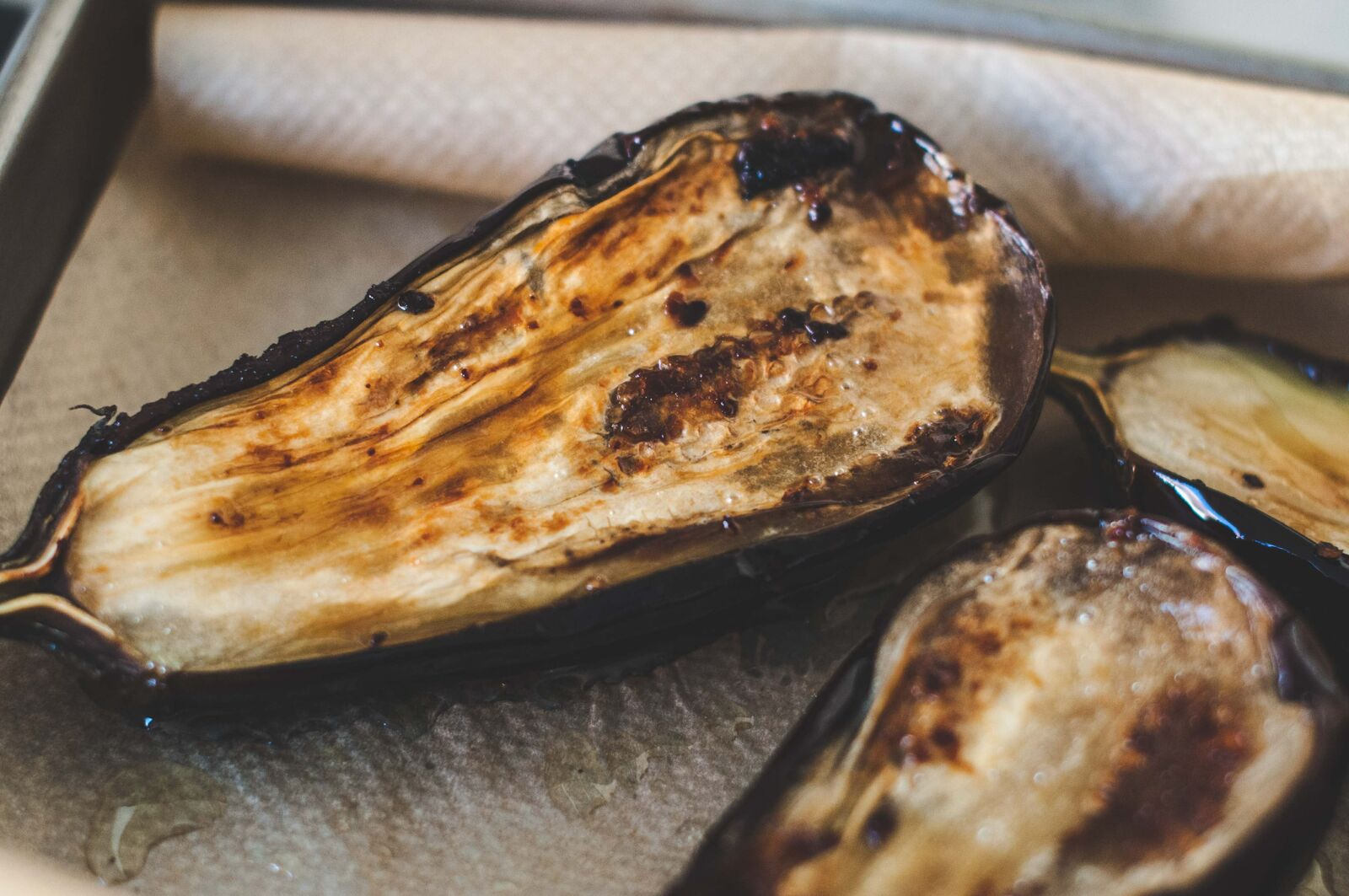
Harvesting, Storing & Processing Eggplants
The time of harvest varies depending on the eggplant variety and location. As a rule, the eggplants can only be harvested as soon as the skin is fully colored. However, some varieties (e.g. 'Applegreen') become bitter when they are fully ripe and should therefore be harvested earlier. In general, you should not wait too long to harvest individual fruits, otherwise they will become spongy. Early harvesting also promotes the development of new fruit. The sepals should always be green and not brown at harvest. Many long summer days are required before the first egg fruits are ripe, so harvesting should not be expected before the end of July or beginning of August.
Once harvested, eggplants can be stored in a cool, damp place for about a week. Pre-cooked eggplant slices or pieces can also be frozen. In the kitchen, eggplants then develop their unique flavor, whether baked, fried or grilled. Eggplants can be prepared in a variety of ways and enrich many (Mediterranean) dishes such as ratatouille, melanzane alla parmigiana or moussaka. Eggplants cannot be eaten raw and are only tender and tasty after sufficient cooking time.
Overwintering Eggplants - Here’s How
As eggplants are perennial plants, it is generally possible to overwinter them. This allows you to harvest a plant again and save yourself a lot of work and resources for growing it. Make sure to overwinter your eggplant plants without pests and diseases. If you have a choice between several plants, it is best to select the healthiest and strongest specimens.
- Harvest the eggplants in good time. As soon as temperatures fall below 12 ° C/53,6 ° F, eggplant plants suffer damage and die.
- Cut the eggplant back generously. Remove the leaves with a sharp knife and cut off a good section of the main shoot. Remove about half of the leaves and the shoot. This way, the plant will need less water and nutrients over the winter.
- Leave the eggplant plants to dry out in a cool, dry place before storing them. This will prevent mold growth.
- For overwintering, it is best to choose a cool, bright place with temperatures around 10 to 15 ° C/50 to 59 ° F. A cellar or unheated room such as a stairwell is particularly suitable for this. The location should also be as sheltered as possible and without cold draughts.
- Now you should water regularly, because even in winter, eggplants need water to survive. Check the plants from time to time for signs of rot or mold. Eggplant plants can also get spider mites if the air is too dry.
- With the onset of spring in February/March, pot the eggplant in a larger pot with fresh soil and move it to a warmer place with plenty of light. You should also fertilize it from time to time until it is planted outdoors.
In the right location, eggplants can also grow well in our region. I hope that you now have everything you need to successfully grow your own eggplants. If you have any questions or comments, please write to us at [email protected]. Would you like to receive helpful gardening tips all year round and plan your own beds optimally? Then register here or download the Fryd app for Android or iOS.
Fryd - Your digital bed planner
Cover image from Photo by Nina Luong on Unsplash

Annabell
Annabell is studying agricultural biology at the University of Hohenheim. She also enjoys gardening in her private life, spends a lot of time in nature and loves to be creative.
Learn MoreCurrent Topics in the Community


Liked 4 times
Hello folks, Today, after almost a year, I took my turmeric plant out of the flower pot that was on our windowsill. I think it's not bad for a 14x14 pot without any special care. On the left is the mother rhizome, which is also edible.
Show 2 answers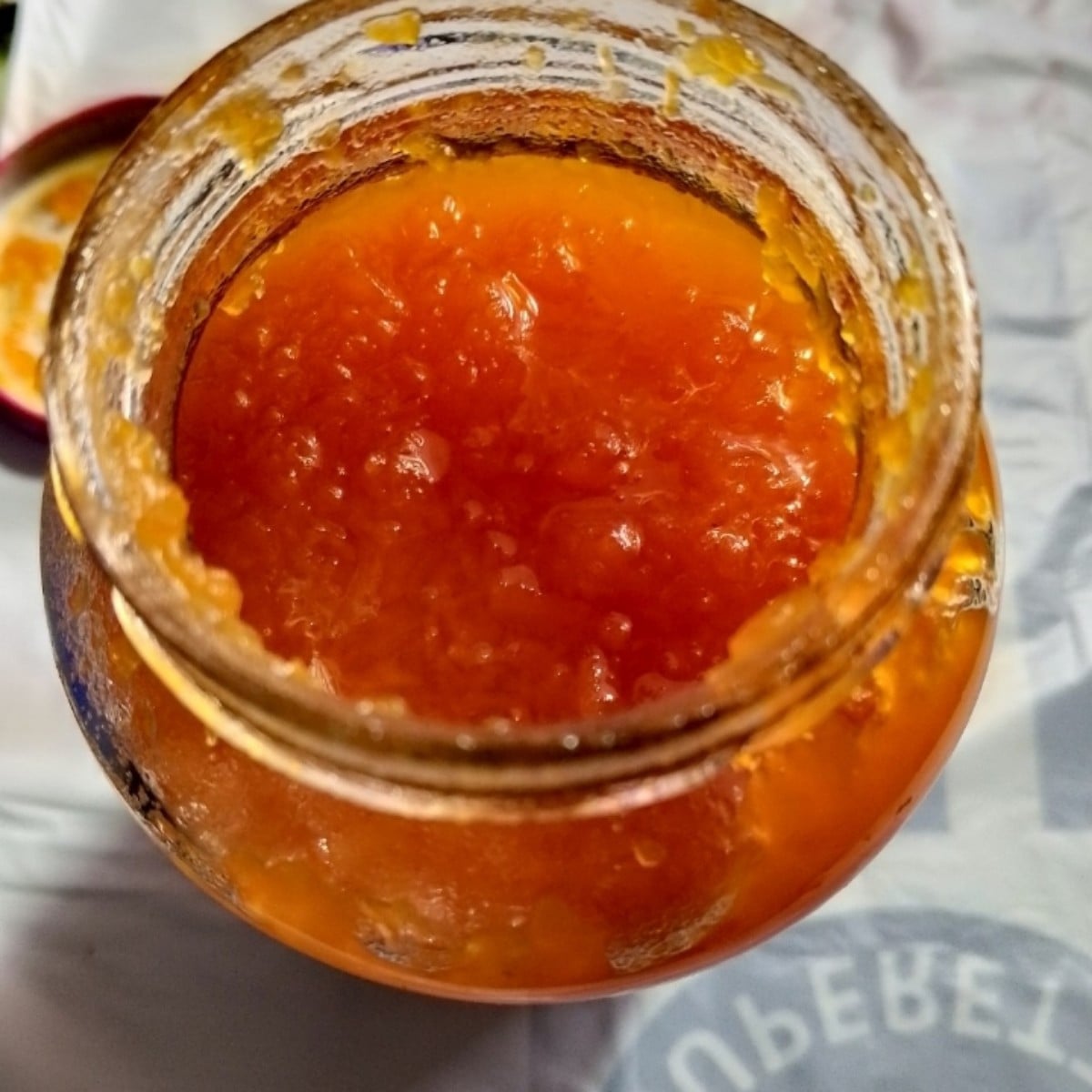
Liked 13 times
Pumpkin jam Cinnamon sticks are added for flavor. It tastes great, do you make pumpkin jam in Europe?
Show 5 answers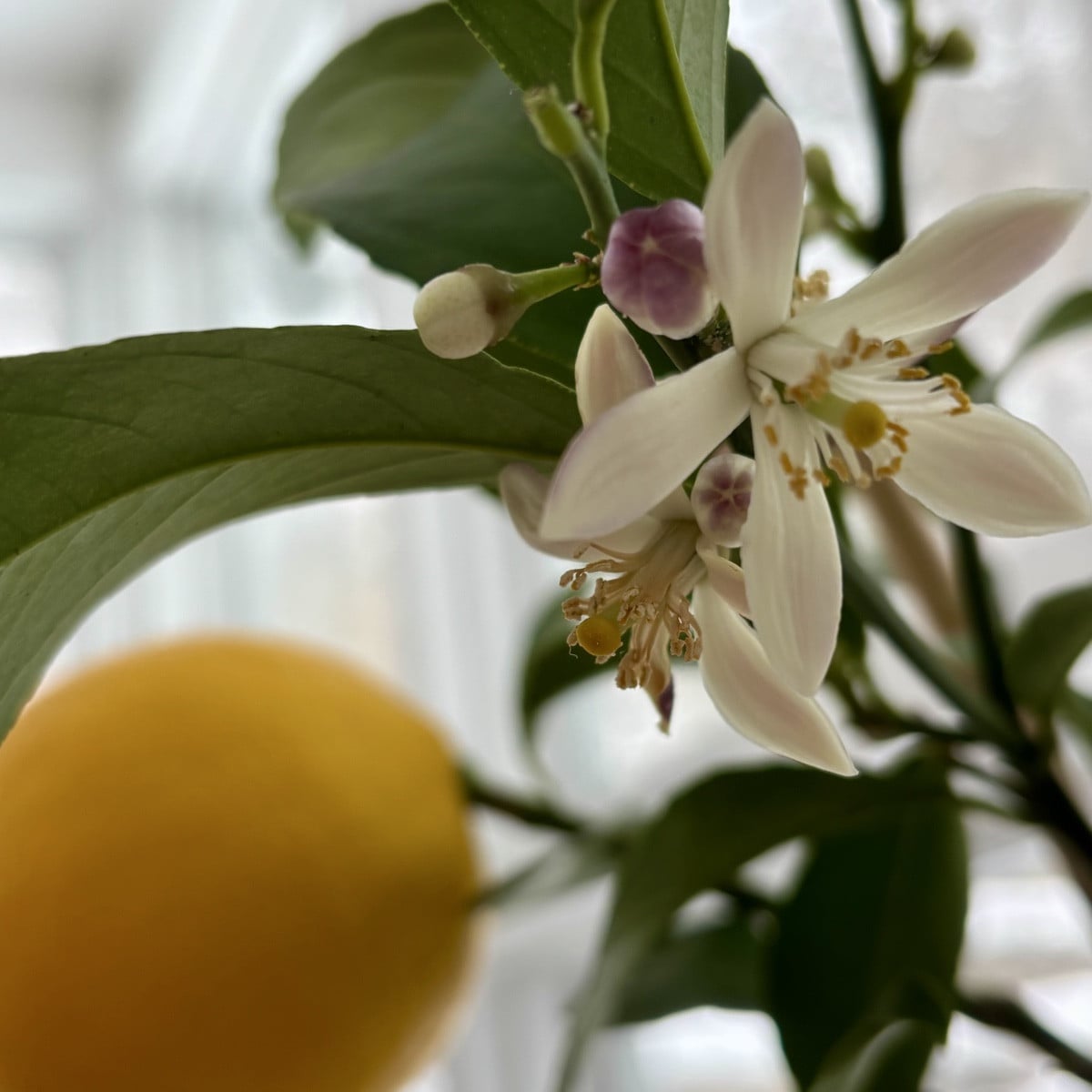
Liked 19 times
There's snow outside, but inside it smells of citrus blossom 🥰🍋🌸
Show 1 answerPopular Articles

Overwintering Parsley: How to Do It Successfully

How to Grow Lettuce in Winter: Varieties, Sowing, Harvesting

Growing Sage Plant: Tips for Sowing and Harvesting

What Herbs Can Be Planted Together?

Create & Design a Permaculture Garden

Overwintering Plants: Tubs, Pots and Raised Beds

Pruning, Fertilizing & Propagating Currants: Care Tips

Pruning Raspberries: How to Do It

Vegetable Garden With Greenhouse: How to Use Greenhouse Effect

Winterizing Beds and the Garden: How to Do It
FAQ
Do eggplants grow perennially?
Eggplant plants actually grow perennially in their native country. However, they die at temperatures below 10 ° C/50 ° F, as they need a lot of warmth. If you want to grow a perennial eggplant in our latitudes, you need to overwinter it in a warm, bright place.
Can you grow eggplants outdoors?
You can generally grow eggplants outdoors. However, they ideally need a temperature of around 25 ° C/77 ° F and a warm, sheltered location to grow well. This is why they are often cultivated in greenhouses in our latitudes.
Due to their slow growth, eggplants are grown early in the year from February/March onwards on the windowsill. They need temperatures of around 22 to 24 ° C/72 to 75 ° F. The first sprouts should appear after two to four weeks.
Can I also grow eggplants in pots?
You can easily grow eggplant plants in pots. Some varieties are particularly suitable for this, as they grow more compactly and have smaller fruits (e.g. Kaberi).